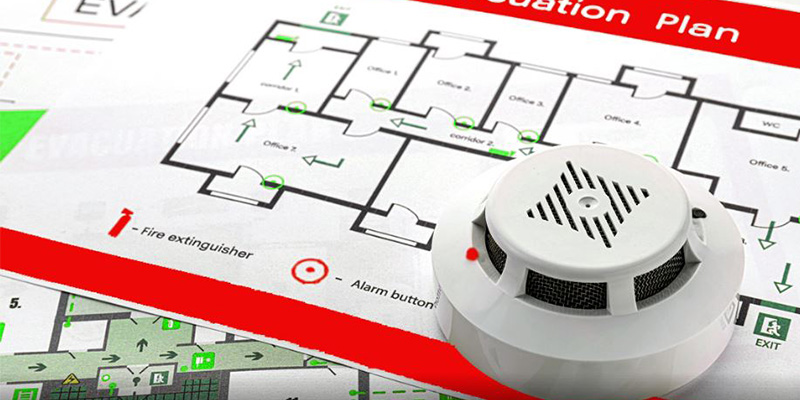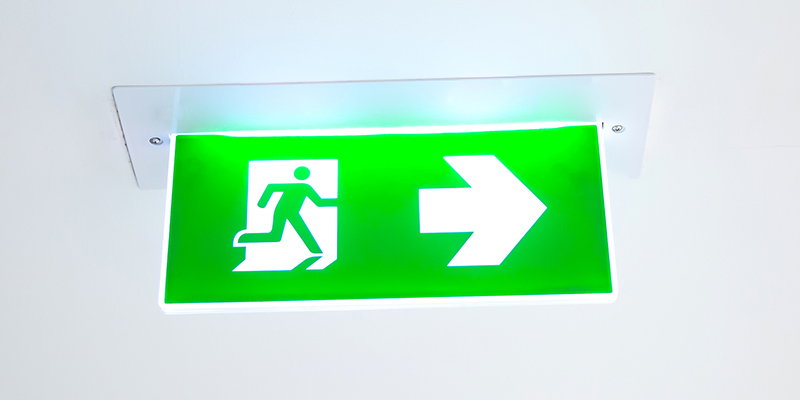An Overview to Fire Evacuation Plans: AS3745 Standards
Builders Industry Blog Hub | October 1, 2024
Fire safety is a critical aspect of any building’s operational strategy. Whether you are responsible for a commercial building, educational facility, or residential complex, having a well-prepared and clearly communicated fire evacuation plan is essential. Evacuation plans must comply with AS3745-2010—the Australian Standard for planning and implementing emergency response actions in facilities. This blog explores the key components of fire evacuation plans aligned with the AS3745 standard and how to implement them effectively
What is AS3745-2010?
AS3745 is the governing Australian Standard for emergency control and evacuation procedures in buildings. It outlines the necessary steps for preparing, documenting and maintaining an Emergency Plan, which includes Evacuation Plans. The standard aims to ensure the safety of occupants during an emergency by specifying responsibilities, procedures and evacuation strategies.
Key Components of a Fire Evacuation Plan
- Emergency Evacuation Diagrams
AS3745 requires every facility to display emergency evacuation diagrams throughout the building. These diagrams should be easy to understand and located in visible areas such as entrances, hallways, and communal spaces. Diagrams must include:- The layout of the facility, including exit routes
- Location of fire equipment (fire extinguishers, hose reels, etc.)
- Assembly areas
- Paths to exit
- Emergency exits and evacuation points
The diagrams should be reviewed and updated regularly to reflect any changes in the building’s layout and structure.
- Evacuation Procedures
One crucial element of any fire evacuation plan is having clear, well-documented evacuation procedures that all building occupants are familiar with. According to AS3745, these procedures should include:- Immediate actions to be taken when the fire alarm is activated
- Primary and secondary evacuation routes
- Instructions on assisting individuals with disabilities or limited mobility
- The procedure for accounting for all occupants at the assembly area
- Instructions for communicating with emergency services
- Emergency Assembly Areas
AS3745 mandates that fire evacuation plans must designate emergency assembly areas. These areas should be safe, easily accessible and far enough from the building to avoid any potential hazards during a fire. Ensuring all occupants gather in these areas allows the Emergency Control to conduct a headcount and verify the safety of all individuals. - Fire Safety Equipment
Fire safety equipment such as fire extinguishers, hose reels and alarms must be clearly marked and regularly maintained. AS3745 outlines the necessity of educating occupants on the locations and correct use of this equipment. While the primary focus of a fire evacuation plan is to ensure occupants evacuate safely, basic knowledge of fire extinguishers can sometimes contain small fires before they escalate.
Maintaining Compliance with AS3745
Maintaining compliance with AS3745 is an ongoing process that requires regular reviews, updates and audits of your fire evacuation plan. The standard recommends revisiting the plan annually or after any building modifications. Regular checks should also be made to ensure that:
- Evacuation diagrams are up-to-date and reflect the current building layout.
- Fire equipment is functioning and accessible.
Why Is Compliance Important?
Failure to comply with AS3745 standards can result in significant legal liabilities, especially if an emergency arises and the building’s fire evacuation plan is found to be inadequate. More importantly, compliance ensures that the safety of your building occupants is prioritised, minimising the risk of injury or fatalities during a fire emergency.
Conclusion
Developing a fire evacuation plan that meets the AS3745 standard is not just about legal compliance but also about protecting lives. By ensuring that your building is prepared with clear diagrams, well-documented procedures, trained personnel and regular drills, you can ensure a safe and orderly evacuation in case of a fire emergency.
If you’re looking to implement or update your fire evacuation plan to meet the AS3745 standard, feel free to contact us. Investing in safety today could save lives tomorrow.
Disclaimer: Please be advised in preparing these blogs, articles, FAQ’s and definitions we’ve drawn from various sources including Australian Standards and industry information, research and knowledge. These responses and English language may undergo subtle changes over time. Therefore, users are exclusively responsible for independently evaluating the definition and are strongly encouraged to verify all pertinent representations, statements and information.









